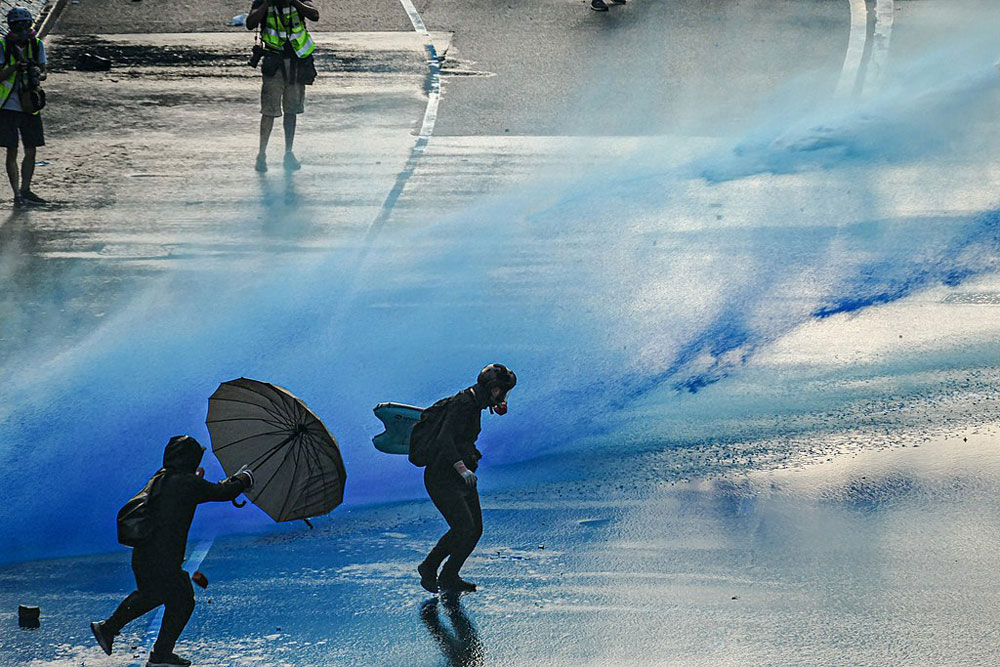
October 29, 2019; New York Times
Rumor has it, via an article in the South China Morning Post, that an edict has been issued in Hong Kong to ban the importation of black clothing from China—black being the signature color of those attending protests. This seems to be an odd choice of repressive tactics, following on the heels of an earlier ban on the wearing of face masks, not to mention the use of tear gas and water cannons, mass arrests, and threats to no longer air NBA games, which has resulted in an even more persistent pro-democracy response.
The protesters do not seem fazed by the measure, writes Vanessa Friedman in the New York Times, who suggests there is probably enough black clothing already in the city to last them a while. Still, businesses report they are having problems shipping black garments into the region:
Brian Au, the Hong Kong-born, Canada-raised founder of CHSN1 (“chosen one”), a streetwear-meets-gymwear line that is manufactured at factories in Guangzhou and offers predominantly black clothing, said his most recent drop had been stuck in customs since September.
“Basically, all courier services have refused to pick up anything black or remotely black,” he said. “I couldn’t even get my samples in. Not a single T-shirt or jacket.”
Sign up for our free newsletters
Subscribe to NPQ's newsletters to have our top stories delivered directly to your inbox.
By signing up, you agree to our privacy policy and terms of use, and to receive messages from NPQ and our partners.
Protestors have distinguished themselves through dress in a variety of ways over the years, of course—I’m recalling Pussy Riot here—but while any color can be adopted to signify a movement, black clothing “remains a hugely significant form of oppositional dress,” according to Dr. Erin Vearncombe, an assistant professor at the University of Toronto, who researches dress and the body. It “signals everything from independent thought to outright defiance and revolution.”
As Annebella Pollen and Louise Purbrick, two researchers at the University of Brighton, UK, put it, “Clothing’s uniquely affective, declarative and performative capacity has meant it has long operated as a central communicative site for political activism and demands for social reform.”
“The use of dress as a form of ‘nonverbal resistance’ seems more prevalent than ever in recent times,” they add.
The ban, Friedman concludes, simply misses the point. “There are, after all, more than 3,000 shades in the Pantone library. To say the dissidents have options is to understate the matter.”—Ruth McCambridge













